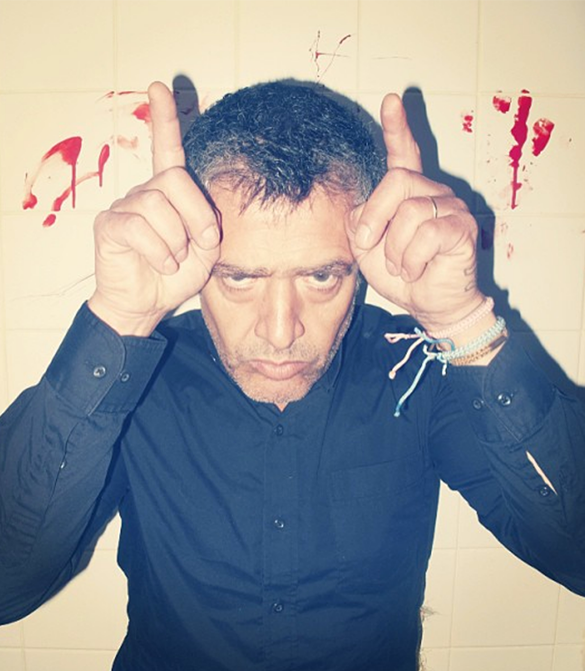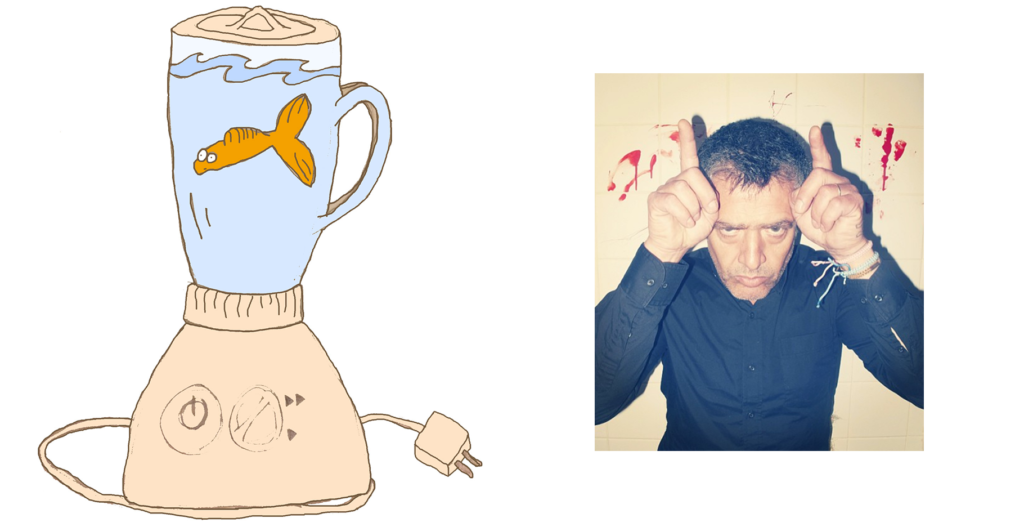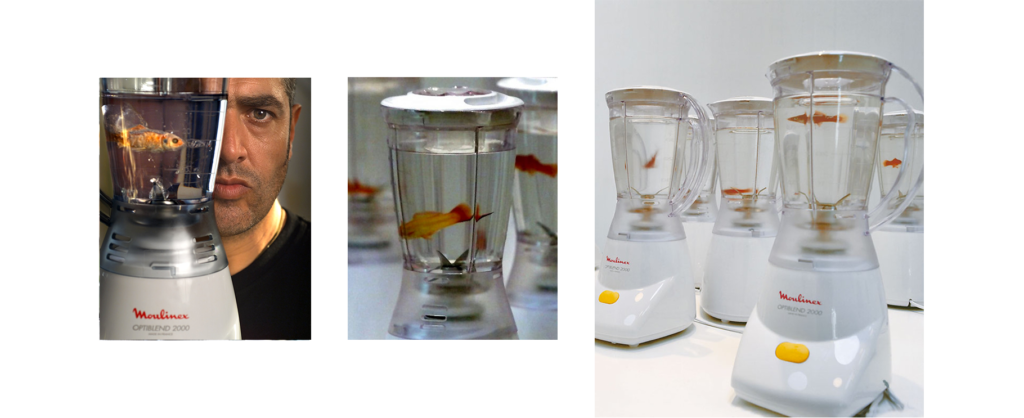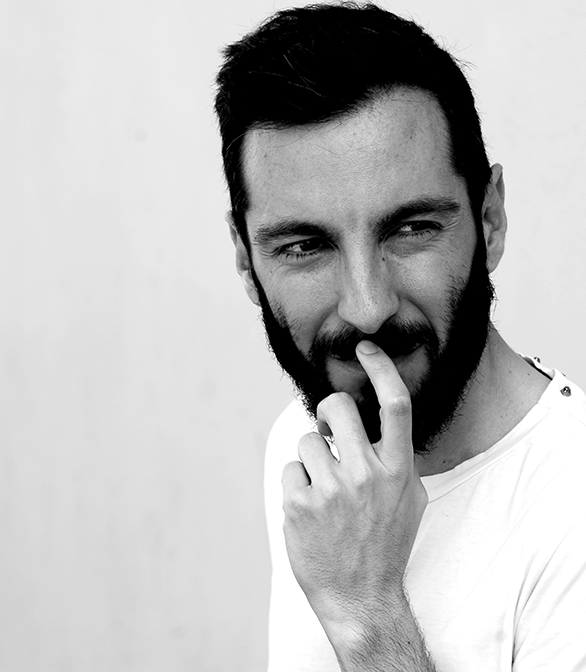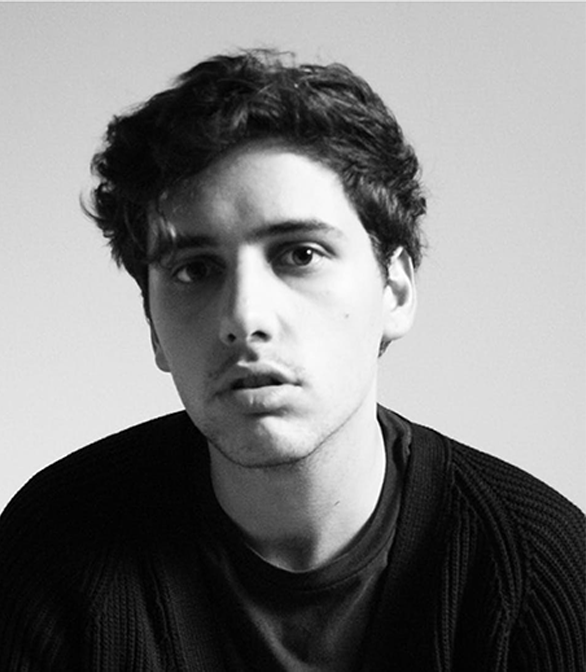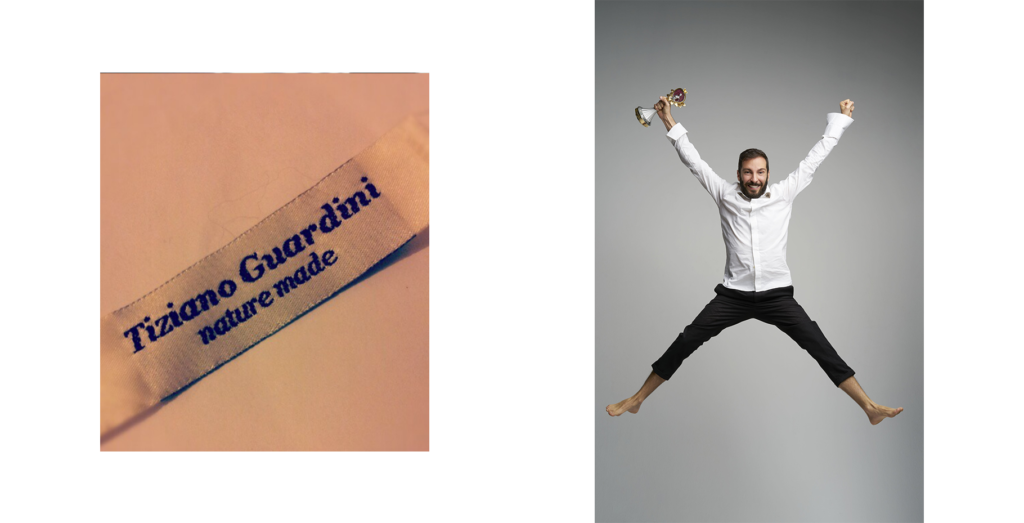
Teaches that a dress’ elegance or the one of a design object is not just valued through aesthetics, but also for the intrinsic quality of the material; beauty cannot be considered such if it causes collateral effects like pollution or social discomfort. The material that we wear must be healthily sourced, protective and eco-friendly. Tiziano Guardini seems to represent the emblem of this new philosophy.
Hello Tiziano, you artistic career has been crowned with national and international successes, when did you realize that fashion would have influenced your life to the point of leading you to success?
Seems weird but today is that moment because when you approach a creative job and you do it profoundly as it is, you never have prepared tracks so I, that sensation of fear and excitement of when you start a new adventure, I always feel it. If i were to tell this story, there have been two important moments, the first one when I was around 11, when I found myself with a blank paper, a pencil and listening to my favorite records made by me, I started sketching intere collections, divided per season and with specific themes. And there I made up my mind. For family reasons I was not able to continue to fuel this impulse so I graduated in economy and after the second moment arrived. In fact just after my first economy jobs I found myself deeply bored and realized that it was not the right job for me, that it was not giving my the right incentives and joy, so I took courage. I enquired about fashion academies that could make my dream come true, that desires was burning again.
I would like you to trace your eco-friendly path with the most important stages that led to your victory at the Franca Sozzani GCC Award for Best Emerging Designer and the Peta Award. In particular, which circumstances make you choose eco-friendly fashion?
I have been a vegetarian for years, now I am a vegan and I try to be as eco-friendly as I can in my day to day life; Since being a child I would take off my shoes and walk bare footed on the earth in my uncle’s garden to feel grounded and to avoid stepping on ants, I think I was born with this sensible necessity, so when I wanted to tell something personal.
At the moment you are exhibiting your pieces at the V&A in London, during the Fashion from Nature with a special dress, almost an art work, in vegea created with biomaterial derived from pomaces. Fashion and Nature are a perfect duo. How was it born and how was this binomal translated in your collections?
My choice is to combine natural elements with high fashion manufacturing. It is about making something of our ancient tradition valuable nowadays. In certain cases is like refreshening it, adding something, modify, adding or highlighting a detail, creating something that has not been seen until today, by still telling about myself. We dress ourselves and tell about who we are. In my case, by being a designer, i pass on my message and I make wearable and livable by other people. In this case, to me fashion has to transmit a message that revolves around respect for nature.
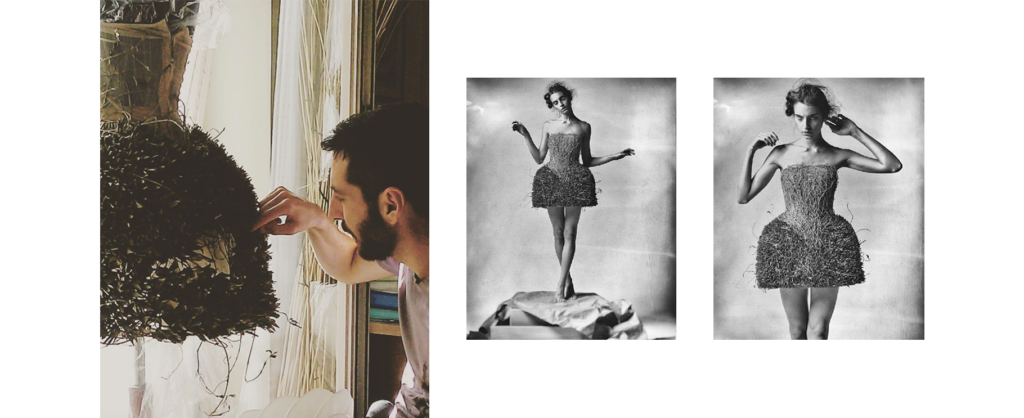
We have been hearing about ethic fashion for a long time. Several brands chose to follow an eco-friendly path investing time and money to introduce eco practices in their production firms. Many consumers make an active research before committing to buying a product and are interested in this trend. Does ethic fashion also means business opportunity? Can it be utilized as a marketing strategy?
Just the fact that is being talked about is a great goal, but not the final one. I strongly believe in freedom so I do not believe in norms imposed from the outside because if we do not deeply feel this choice we will end up cheating and finish with compromising with times set by the fashion system. I am convinced that I should put value into everything I do, so ethical and eco-friendly all day long. From little things like not leaving the lights on in rooms where I am not looking for fabrics to manufacture, being in harmony with life. Sustainability is often utilized as a marketing tool, recurrent words are “commitment” and “honesty”. My collection comes with labels that explain where the fabrics come from. The level of transparency is becoming an important factor.
London Fashion Week has just come to an end and the British Fashion Council has banned animal fur making London’s Fashion Week the first one completely fur-free, what are your thoughts about this?
I am euphoric to apprehend that fur has been banned. Progress! Some important guide lines need to be followed: social and eco sustainability, equality and diversity, craftsmanship and community.
The commitment demonstrated during the Fashion Week will hopefully be of example to all manifestations that work as a mere motor in the fashion system.
Which colors and materials represent better your idea of eco-friendly and that you favor?
The natural. I do not like artifact things, I tend to not hide them, it is all easily understood. I love the incredulity in the fact that it can be thought about: is it possible that is made with that fabric? Yes, but it is not modified, it is not treated if not naturally.I usually tend to maintain its natural color. Most part of my job is based on research, so I keep in touch and work with the same suppliers in the fashion industry to create a product as much eco-friendly as possible. For example the buttons industry Lampa, in order to create their pieces, utilizes fishing nets recovered from the sea or recycles waste from their manufacturing and it has solar panels on their roofs to provide them with energy. When I started there was not all this choice but there is still lots to do. Another example is the one of the employment of cruelty free silk, where compared to the normal one,they do not kill the silkworm, instead they wait for him to get to the last phase and then they collect the abandoned cocoon. It is attention to the next, to the future and to living in harmony as much as possible with nature itself and moving in this direction improves these aspects. Just like in the Colibrì tale that inspired my work since the beginning: drop by drop you can put out a fire, just like little by little you can make a difference.
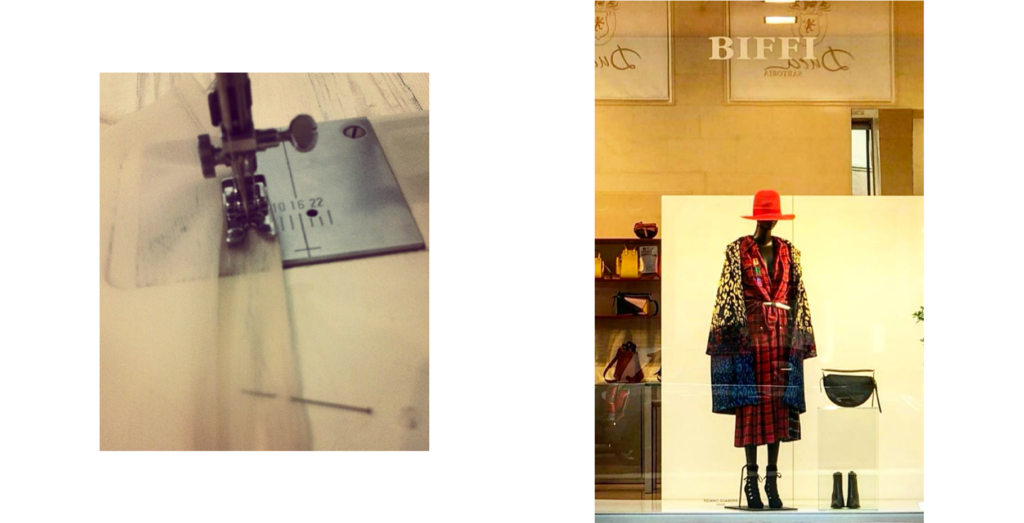
What stage are we at with regards to the eco-frienfly path? What more can our country do or could do to incentivate this environment?
Becoming normality. Why are there still companies who do not care about the impact they have on the eco-system? World is not ours, we are just a part of a balance and nature often reminds us of it. We should learn to communicate with it, to respect it, to feel it and improve day by day our approach towards it. I too, every day make and have made little changes and improved my empathy. For example in private I use eco-friendly detersives and I refill them. Going back to your question, the challenge is to open a dialogue with nature, with the future and even with our next because a gesture of life now resonates for everyone. I have hope. We should never forget that the world we live in is not ours to possess and destroy, it must be respected.
Choosing to dress with sustainably manufactured clothes every day, we choose to make a difference, in our lives and in the world surrounding us.
We have come to the end of the interview, last three questions: What do you wish to bring out of your collections? Three adjectives that describe your fashion? What future plans can you anticipate us?
Respect and care for nature, the planet. My message is undoubtedly one of respect of manufacturing and of materials. The base is the listening of the world. I do not want to create something to be known, but something of common good. The key words to describe my fashion: modernity, originality, eco-friendly. My future? Come visit me in my showroom, acknowledge my work and buy my pieces otherwise there will be no future and my work will be in vain. Only together we can make the difference, do not forget that.
p h o t o s c o u r t e s y t i z i a n o g u a r d i n i
w o r d s e u g e n i a b o o k
t r a n s l a t i o n g i u l i a c a t e n a
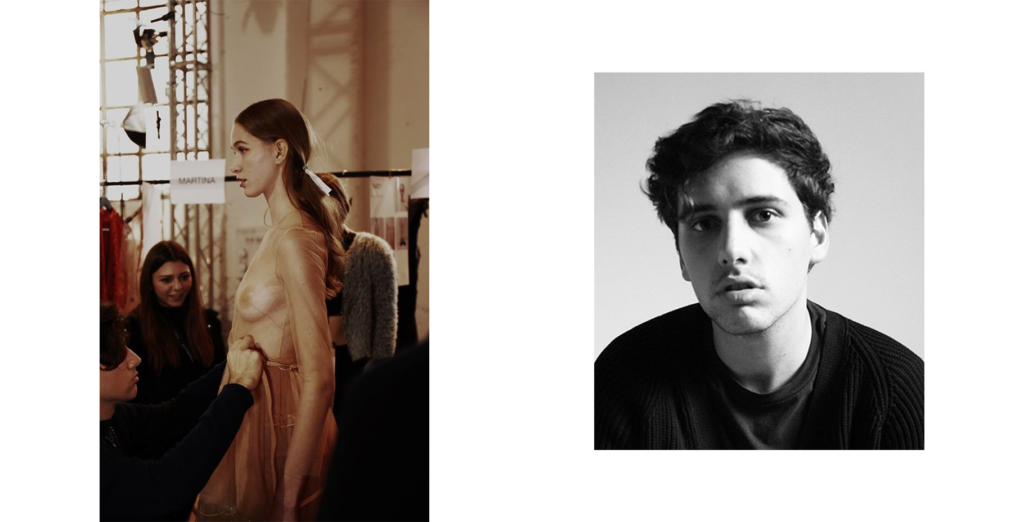
Davide Grillo is a young fashion promise, distinguished for his creative essence that appears light and pleasing. With fervid passion he interprets the future and the new technologies mixing then with the traditional Italian tailor’s shop.
Hi Davide, you are an extremely intellectual individual for your age. How much did the academic studies and the experience for Dolce & Gabbana Haute Couture have influenced your inspiration and extraordinary craftsmanship?
I do not believe myself to be acculturated, unfortunately, but to have a fervid imagination and thirst for knowledge. My academic path has been irregular compared to the classic academies. I attended a professional institute in Parma (IPSIA P. Levi) in fashion and then at seventeen I started working and learning in the field, I must say that Pinko, in refer to this has been a great school! I then shifted to high fashion which has been very interesting under many aspects. High fashion is the maximum expression of clothing not for the prices or materials used, but (even if it
seems the most conservative) for its innovation in regards to shapes and volumes and its constant research of conceptual aesthetic. I must say that it is the constant fusion that I want to give my collection season after season even tough it is pret-à-porter.
Sustainability and young talents continue to cross paths in the Green Carpet Award edition, organized for the second consecutive year by the Camera Nazionale della Moda Italiana, competition which aims to make consume sustainable. What is your opinion in regards to that?
Crucial to the survival of the fashion industry, but even more to the planet.
What do you think of social networks? Are they necessary to get known and get to a bigger audience?
I think them to be an excellent way of communication, for a brand is like a space, a window where a voice can be heard and from where to pass on our aesthetic meanings. My strategy still remains to do qualitative pieces and not just finalized to social media.
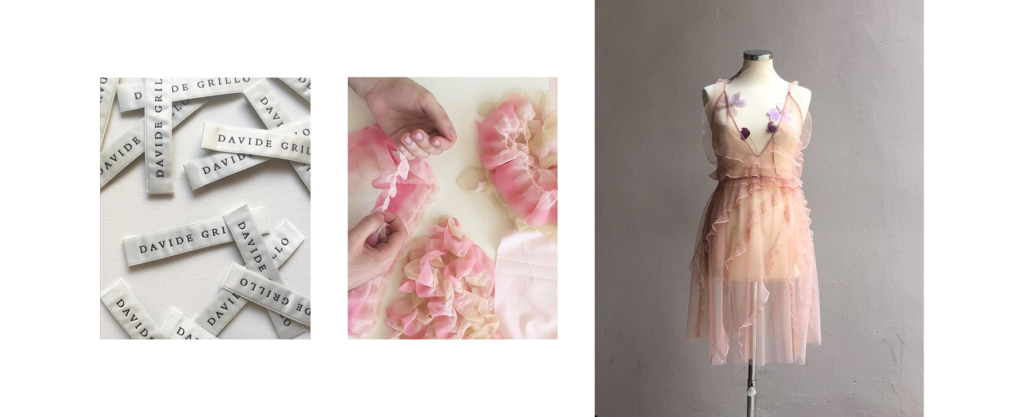
Which are the major obstacles that a designer has to face to get notorious?
My biggest mistake has been to apply a strategic sale based on our actual market. I think that each brand in this stoic period should find its personal commercial key and net of sales.
What encouraged you to participate to the first Next Generation of the Camera Nazionale della Moda Italiana? and later in Who is on Next by Vogue?
I think it is important to constantly challenge ourselves.
What was your creative process? What inspires you?
Inspiration comes from everywhere. You just have to keep your eyes open. The important thing is to have thirst for images!
Making your passion into a job is a desire longed by most of us. When did you realize that fashion was yours?
I have always thought of myself to be extremely lucky because I have always known. It has always been inside me, it is difficult to explain.
Are there any fabrics and materials that you favor to create your dresses? Why?
Chiffon! Chiffon! Chiffon! It is in my DNA!
In 2016 your brand was born, do you have a favorite among the collections?
Engaging with what I wrote before, a chiffon slip dress in an acid green color, very simple with small hand embroidered flowers on the shoulders. The look was presented with a long line military coat hovering the ground in mohair and silk cut in live.
Let’s finish the interview with three last questions: What would you like to emerge from your collections? Three adjectives that describe your fashion? What future plans can you anticipate us?
The important thing for me is to create collections that women like, and that feel comfortable wearing, my aim is to make the Davide Grillo woman feel special in my dresses. Three adjectives: dream, refinement, poetic idea. I am extremely superstitious so none!
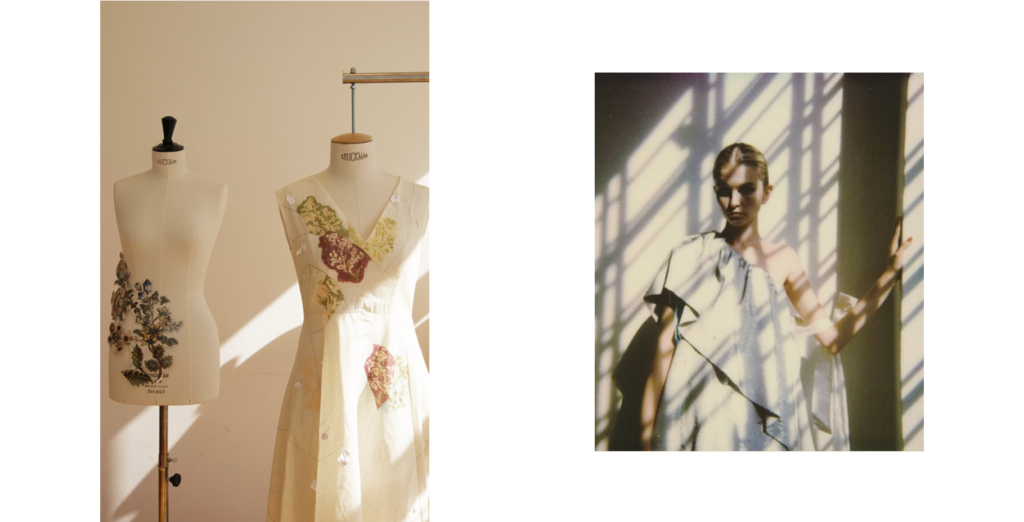
p h o t o s c o u r t e s y d a v i d e g r i l l o
w o r d s e u g e n i a b o o k
t r a n s l a t i o n g i u l i a c a t e n a

